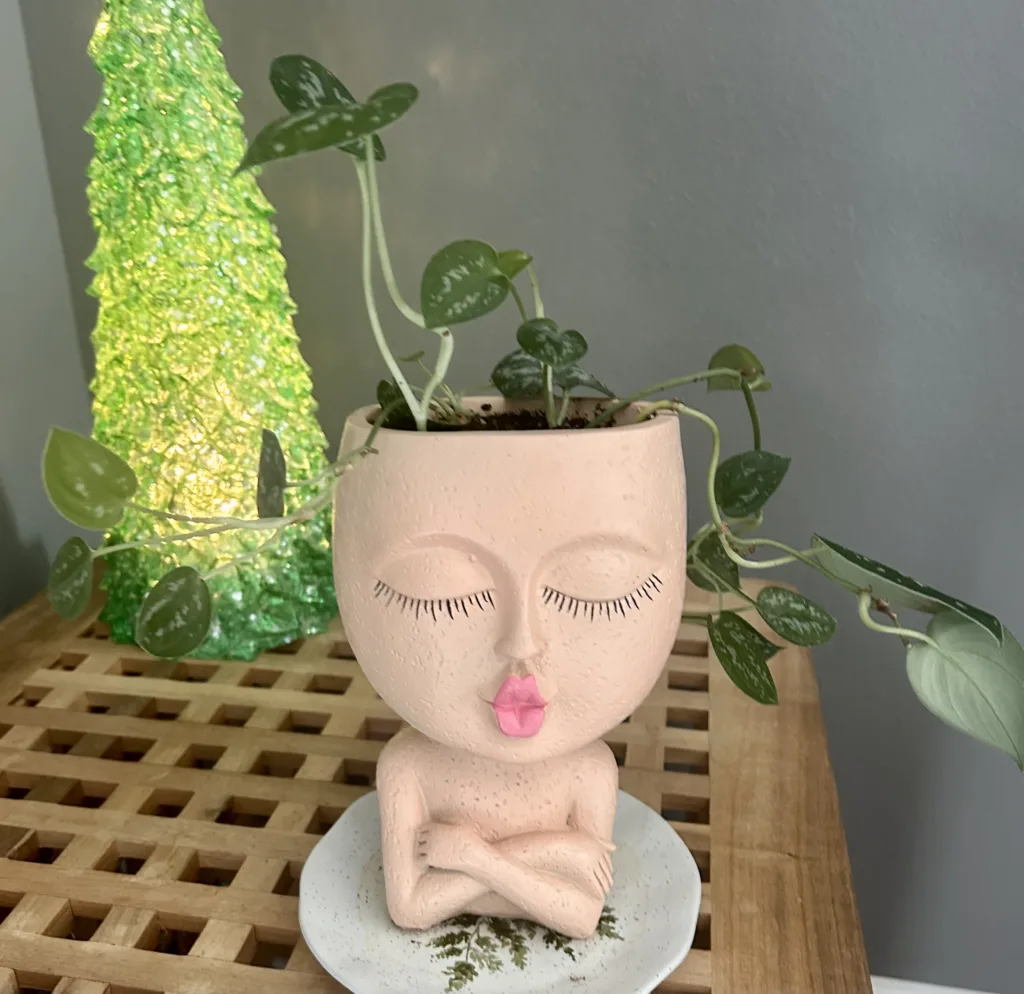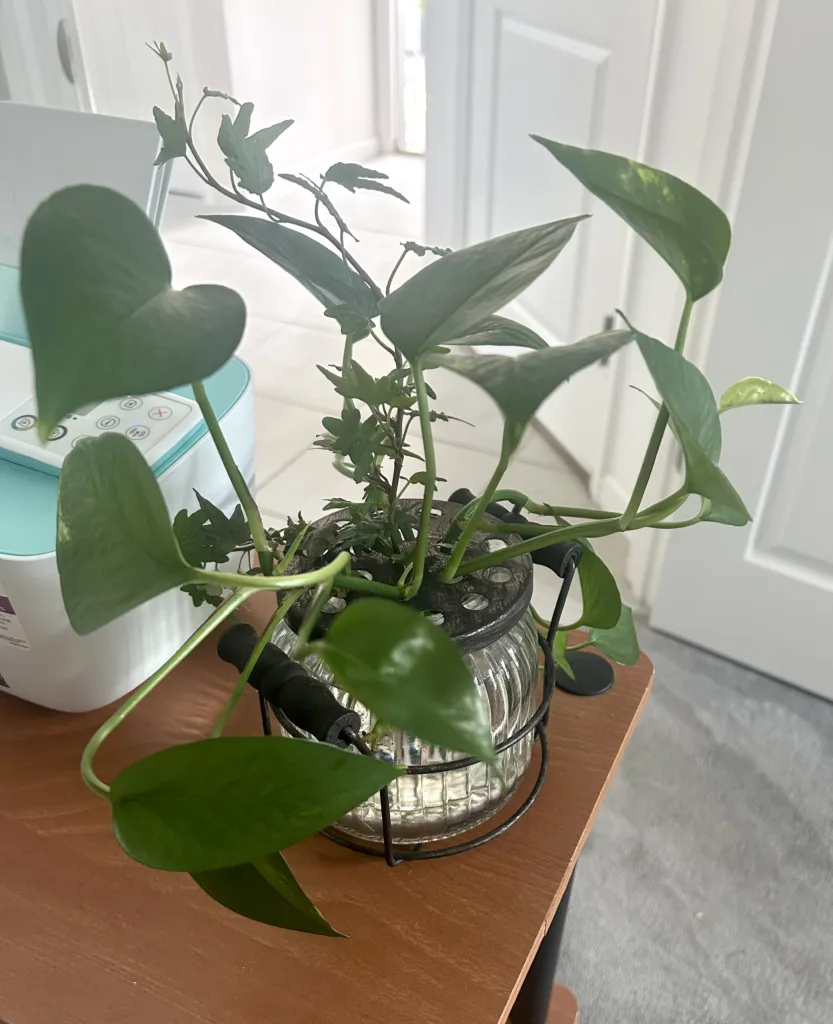Are you looking for a beautiful, low-maintenance houseplant that can brighten up any room with its stunning colors? Look no further than the Philodendron Jungle Boogie! This popular plant has become a favorite for gardeners all around the world, thanks to its remarkable features and ease of care. In this blog, we’ll talk about everything you need to know about Philodendron Jungle Boogie, including the pot type, soil type, light requirements, water needs, fertilizer, and how to propagate. So, let’s dive in!
The Best Pot Type for Philodendrons

Philodendron Jungle Boogie prefers to grow in well-drained pots with good quality potting soil. You can also use a planter with a drainage hole to prevent any waterlogging, which can lead to root rot. Additionally, make sure to choose a pot that is not too big or too small, as this can affect the growth rate and health of your plant. I love starting my Philodendrons in these adorable pot head planters and as they grow move up to these beautiful ceramic planters.
Soil type for Philodendron Jungle Boogie
When it comes to soil type, Jungle Boogie thrives in moist, loamy soil that is rich in organic matter. You can add peat moss or perlite to enhance the soil’s texture and drainage capacity. I prefer Miracle Grow Moisture Control potting soil, usually mix 50% potting soil with 25% peat moss and 25% perlite.
Light Requirements
Jungle Boogie prefers bright indirect light, with a few hours of morning or evening sunlight. However, make sure to protect your plant from intense direct sunlight, as it can cause sunburn or scorching of leaves. You can also use LED grow lights if you cannot provide enough natural light.
Watering your Jungle Boogie or Growing only in Water
Philodendron Jungle Boogie requires regular watering to keep its soil moist but not saturated. Allow the top inch of soil to dry out before watering again. Overwatering can cause root rot, while underwatering can lead to dehydration and wilting of leaves. In the summer, you may need to water your plant more frequently, while in winter, you can reduce watering intervals.

Philodendrons are also one of many plants that grow solely in water, I have one in my office that has been growing for a few months now. I just change out the water every other week to avoid bacterial growth. Click here to read my blog post on plants that grow in water.
Fertilizer Needs
Jungle Boogie is a slow-grower and doesn’t require frequent fertilization. You can use a balanced liquid fertilizer once a month during the growing season, which is spring to early fall. If you notice any yellowing or wilting of leaves, it may be due to a lack of nutrients or improper light or water conditions.
Propagating your Philodendron Jungle Boogie
To propagate your Jungle Boogie, you can use stem cuttings, which can be rooted in water or soil. Make sure to choose a healthy stem with at least 2-3 leaves and a node and cut it just below the node. Place the cutting in water in a propagation station until roots form and then plant in pot or plant directly into moist soil and keep it in a warm, bright spot.
Happy Gardening
In conclusion, Philodendron Jungle Boogie is an excellent choice for any gardener, whether you’re a beginner or an experienced plant enthusiast. With its stunning foliage and manageable care requirements, this plant will add beauty and charm to your living space. Just keep in mind the pot type, soil type, light requirements, water needs, fertilizer, and propagation tips mentioned in this blog, and you’ll have a healthy and thriving Jungle Boogie in no time!
Please be sure to check out my Gardening Blog Post Page for more tips on all types of gardening. Including Seed Saving, Seed Starting, Orchids, Water Gardening, Coldframe Gardening, Indoor Bulb Gardening, Hydroponics, Container Gardening, Mums, Herbs, African Violets, planting Bulbs, Flower Gardening, Vegetable and Fruit Gardening, Indoor Houseplants of all kinds, Cactus, Succulents, Hanging plants, Deer resistant plants and even Bird, Bee, Butterfly and Hummingbird Gardens!

